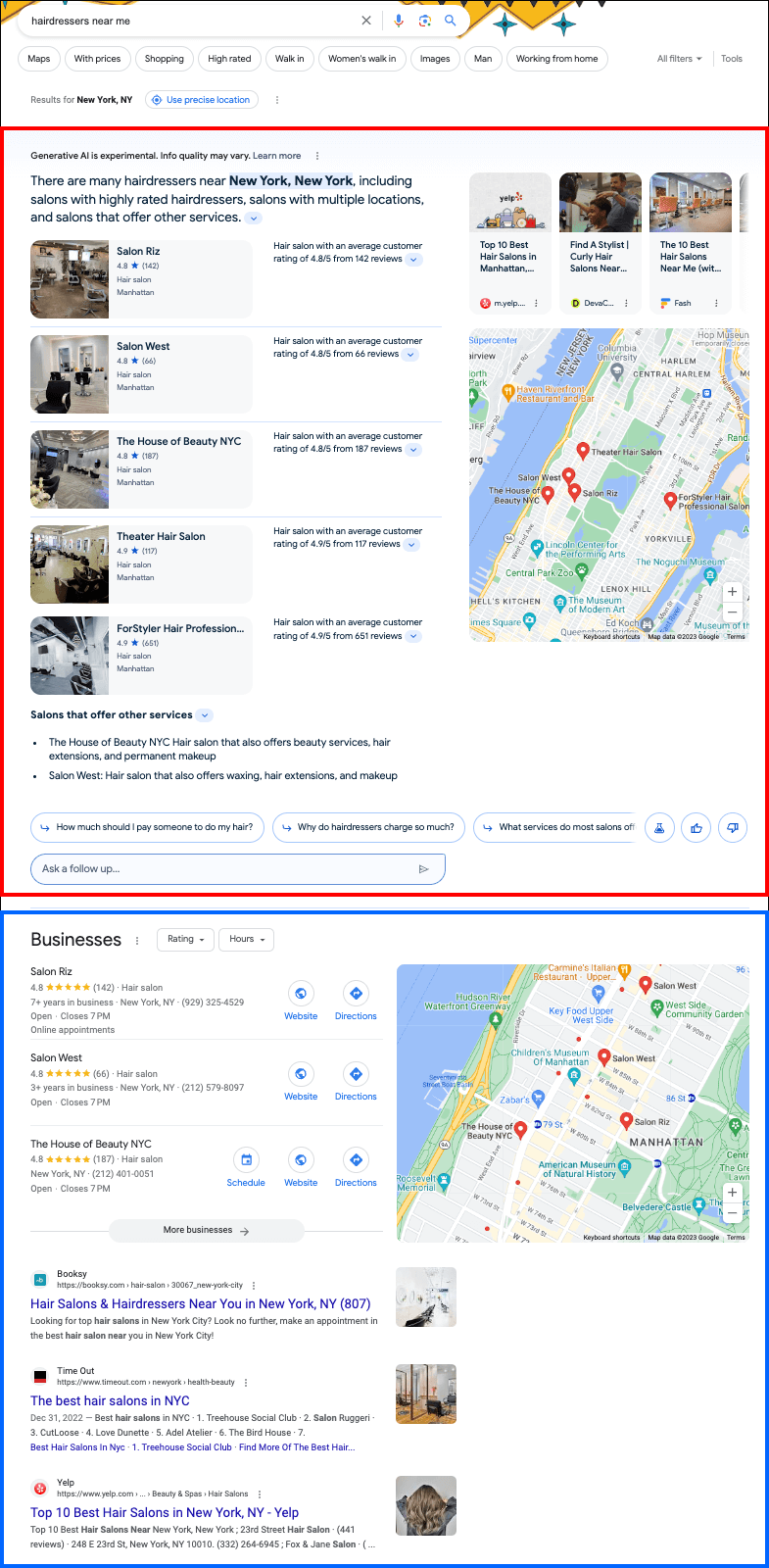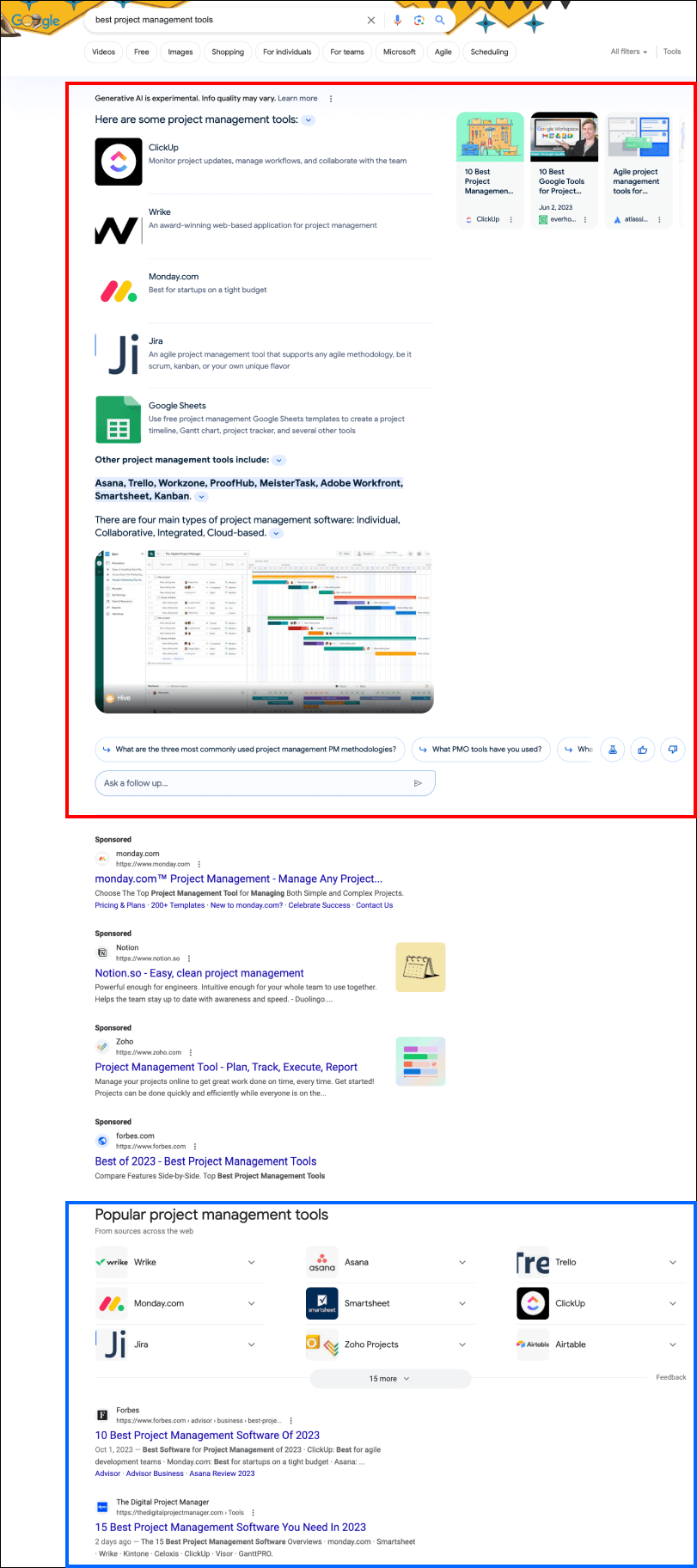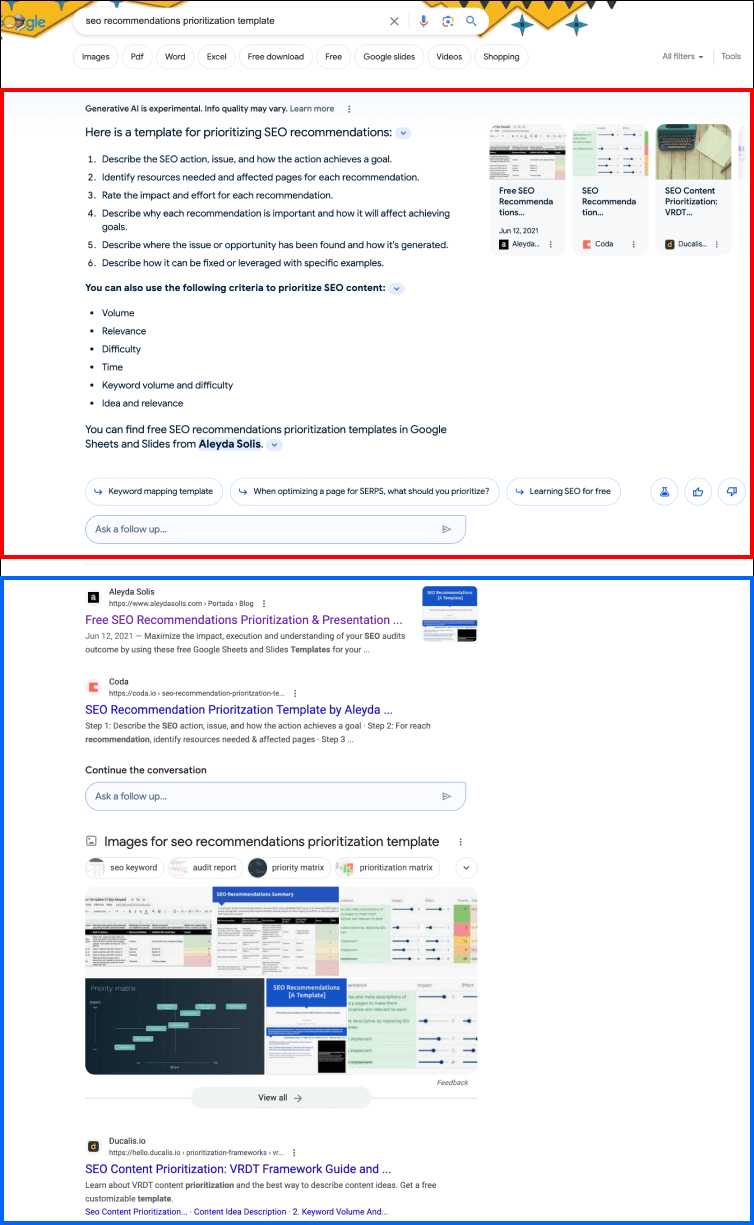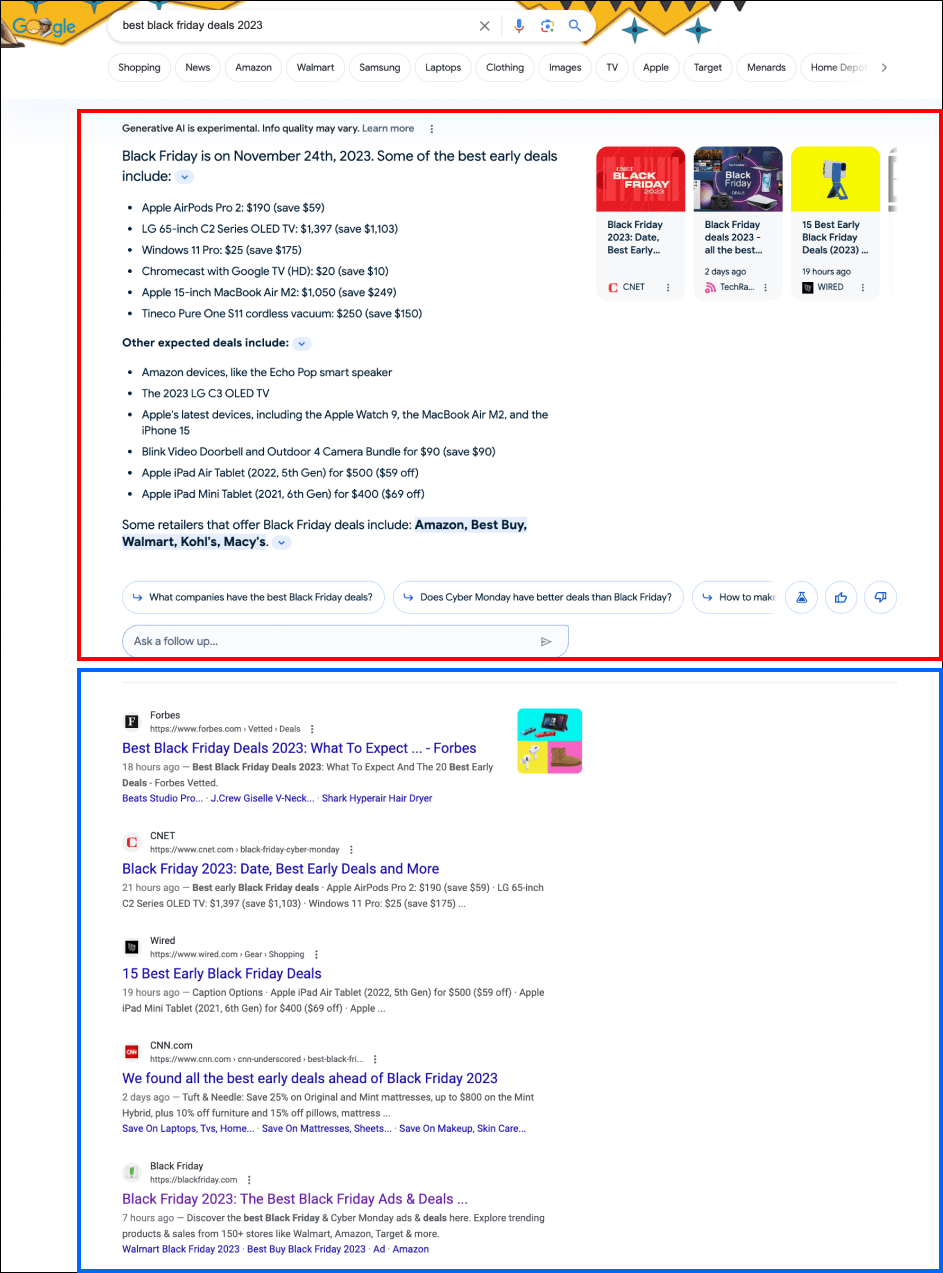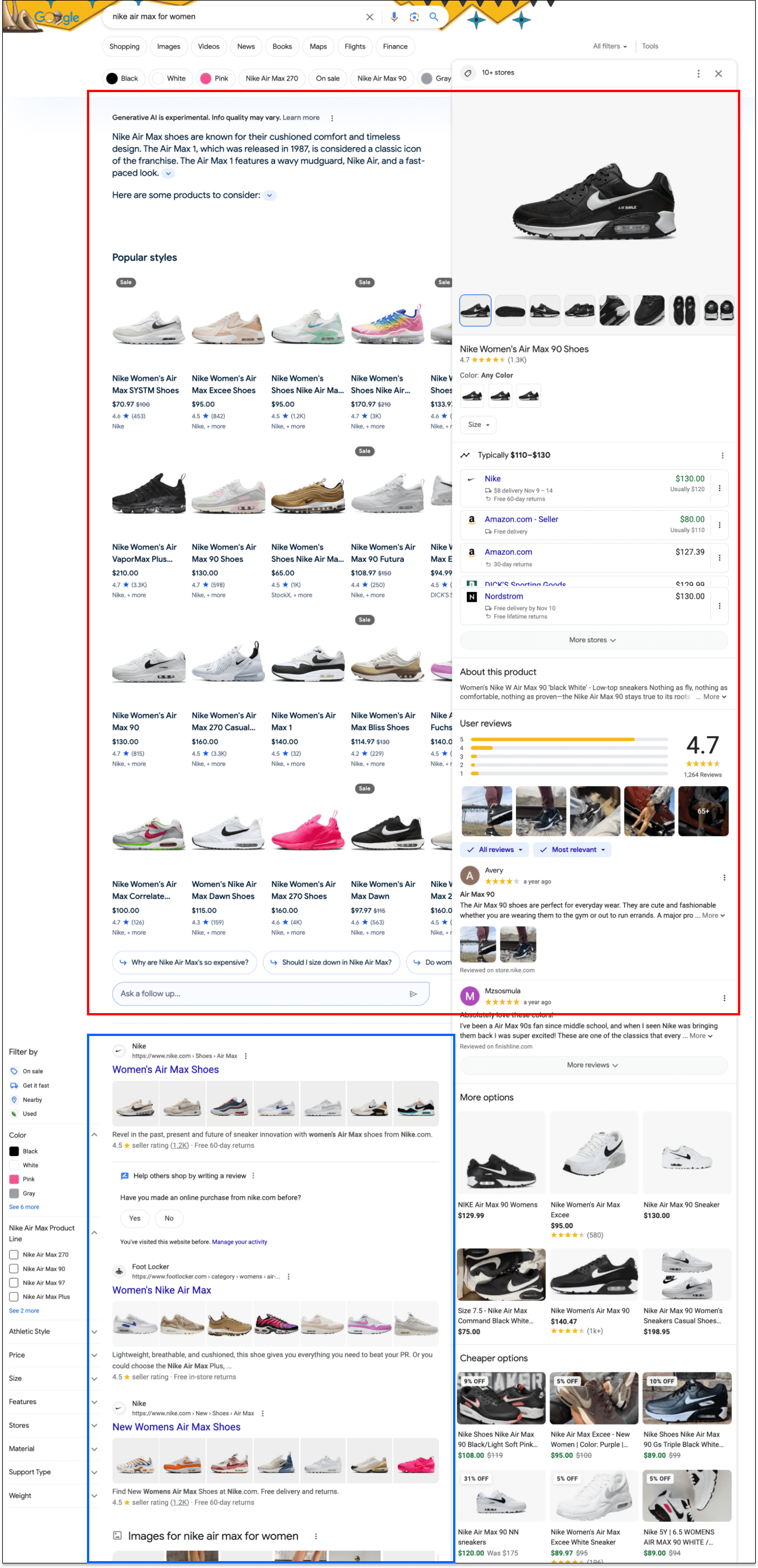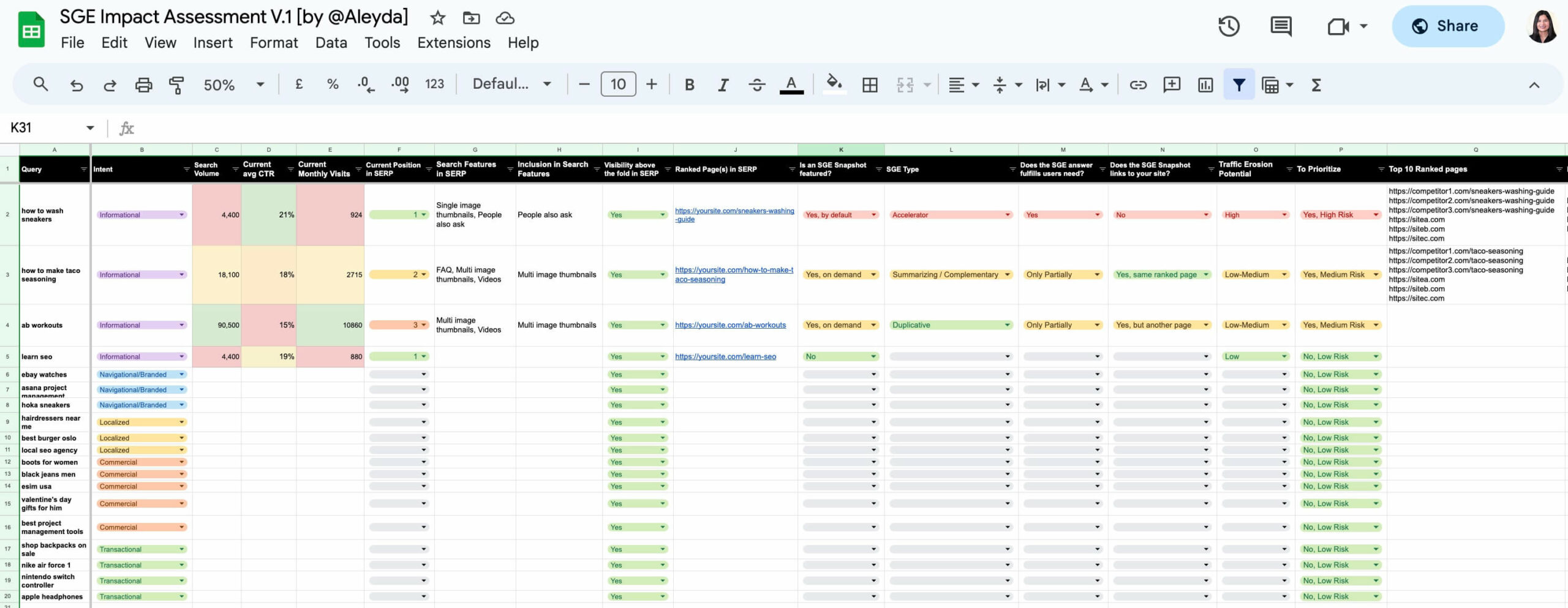I’ve been continuously playing and monitoring Google’s Search Generative Experience (SGE) still in test results for my SEO clients and my own sites’ key queries through the customer journey since the test release a few months back.
As a result, I have posted in the past about my initial SGE thoughts, as well as the potential SGE impact on popular Black Friday and Cybermonday queries traffic -if it was released as it is now-.
Even if Sundar Pichai from Google has said that they “will get it right” before it’s officially launched, the uncertainty of generative search has been listed as one of the worst SEO horror stories this year.
The reality is that we’re afraid of losing organic search traffic with the eventual launch of the SGE.
On one hand, I’ve mentioned in the past how a big traffic dip due to SGE is unlikely because:
- During its test time, the SGE has gone through many refinements, now with less initial visibility by default and more “overlaying” links included too. Additionally, for many queries, there isn’t a snapshot included at all, and for others we need to click on a “Get an AI-Powered overview for this search” option to get it at all, or the snapshot is only partially shown with a “show more” option to see it completely.
- Referring users to sites where they can actually execute what they’re looking for (to buy, reserve, or convert with a service, product, or information) is at the core of search engines business model, so there’s certainly an incentive to get it right, and continue to do it so.
Nonetheless, what it’s true, is that some SGE snapshots will shift users to different pages (types and providers, including competitors) during their search journey, by satisfying faster or differently their search intent, depending on how the SGE snapshot information overlays with the existing organic search results.
In general, I see 3 different main SGE snapshots types, with different levels of traffic risks towards the top ranked pages, depending on how they overlay with them. Let’s go through these scenarios.
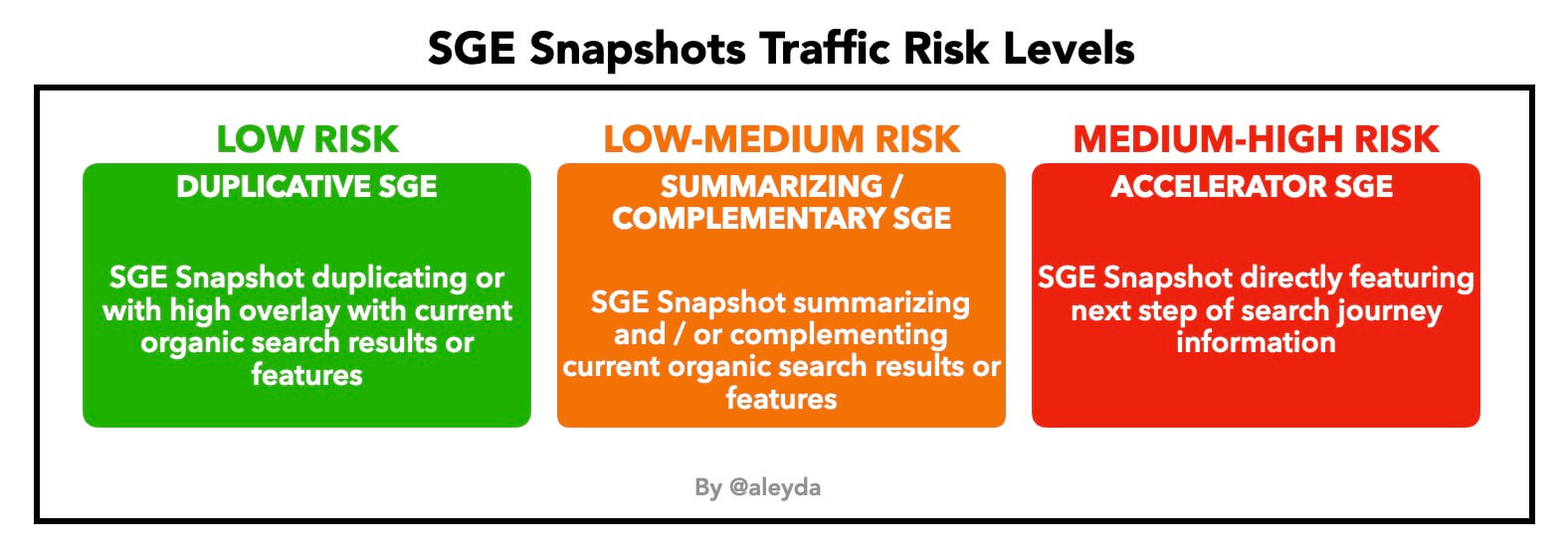
1. Duplicative SGE Snapshot: Low Current Traffic Risk
This happens when the SGE snapshot duplicates or highly overlays with the current organic search results or features. Users won’t be incentivized to click on the SGE information due to this, and even if they do, they will tend to go to the same pages already ranking in the top position in the traditional search results or search features.
For many of these, and due to the high overlay, I would expect that Google won’t end up showing the SGE once it’s officially released, as it will be useless.
For example, this happens with queries like “hairdressers near me”, for which the SGE shows a map pack like results pretty much replicating what’s already shown in the local pack featured below.
Something similar happens when searching for “best project management tools”, for which tools along with short descriptions are directly listed, although without linking directly to them from the list. Even if these were at some point linked, they highly overlay with the tools already listed below highlighted already above the top ranked pages, with clickable/expandable features.
I expect that due to the highly overlaying nature of the SGE with the already ranking players with a similar format satisfying a similar need will mean that the impact in traffic for them will be low.
2. Summarizing & Complementary SGE Snapshot: Low-Medium Current Traffic Risk
This happens when Google SGE features summarizing and/complementary information of the already well ranked pages, which can be useful to have an overview of the topic, but won’t completely satisfy users need, and hence, they will still need to click on the top ranked pages below the SGE snapshot.
Also, even if users end up clicking on some of the carousel pages in the snapshots, or “clickable” options within the content, the pages highlighted there highly overlay too with those already top ranking ones.
This happens for example for queries like “SEO recommendations prioritization template”, the SGE features a high level description of how is it developed, but won’t satisfy the need of a user looking to see or download one.
Something similar happens when searching for “best black friday deals 2023” for which we can see the SGE features a non directly clickable list of products featured in the top ranked articles, pushing the users to go to the articles anyway to see them. Even if users decide to click on the SGE links options, they will also tend to go to the same top ranked pages too.
I expect that in this scenario, there will be a low-medium risk to the current traffic of top ranked pages.
3. Accelerators SGE Snapshots: Medium-High Traffic Current Risk
This happens when the SGE snapshots directly feature information that the user will expect to access in the next step of their search journey through the currently ranked pages, hence satisfying faster their intent without having to go through them.
For example, for “women black jeans” the SGE snapshot recreates a product listing (or a category/facet like page) already featuring a variety of products matching the characteristics we’re looking for that are also clickable, showing a product knowledge panel whenever we click on them. In the product knowledge panel we will be able to directly see and click on vendors selling them.
This will mean that users won’t need to go to the product listing pages (whether category or facets) already ranking in top organic search positions anymore to access these products information and buy them:
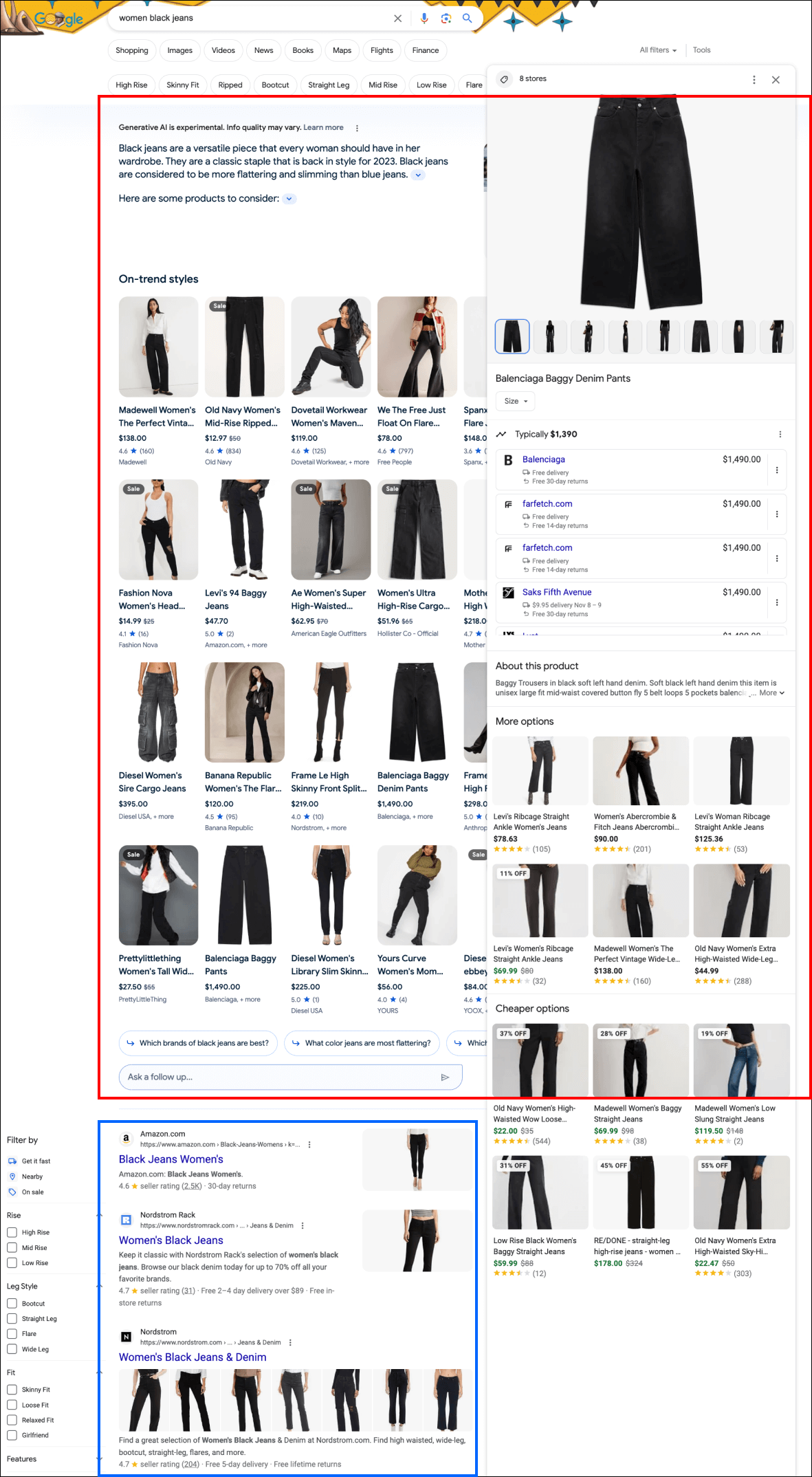
Something similar happens with branded queries like “Nike Air Max for Women”, for which a PLP like snapshot is also shown in the SGE, directly featuring clickable products showcasing a product knowledge panel listing different product pages of merchants selling them, whether the own brand or third party vendors.
Since the best ranking page(s) for these branded queries usually are the brand site categories or facets pages, this means that they will tend to lose this traffic, and at least a share of this will end up going now to their distributors/vendors sites selling them too.
I expect this scenario to be the worst towards traffic impact due to the shift in click behavior it might have with users going now directly to product pages of not only the best ranked listings, but a variety of vendors optimizing well their product pages to be shown in the product knowledge panel.
In this case, I highly advise ecommerce sites and marketplaces that would potentially suffer from this scenario to start better optimizing their product pages to ensure they’re able to catch this more transactional traffic.
What next? Assess your own SGE Traffic Risk with A Free Sheet
It’s important that you start testing how the SGE is shown and the information highlighted there for the top queries of your sites through the customer search journey to first assess in which of these different types of SGE snapshots scenarios they fall and then depending on the risks, you can focus on optimizing (or creating) different type of content that you might not be considering at the moment to keep your visibility through the snapshots, and keep attracting users to click on your Website.
To help you, I’ve created this free Google Sheet, to assess the SGE related traffic risk for your own site queries:
Start analyzing your own site traffic risk with it now!
